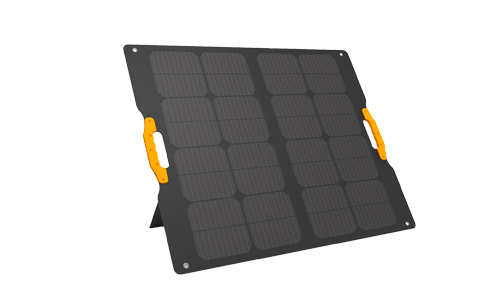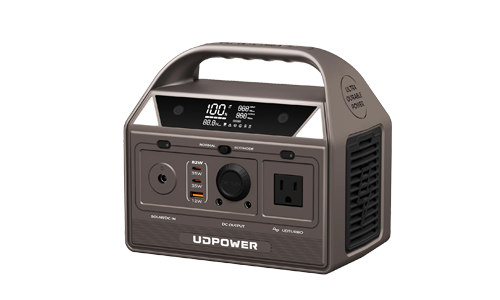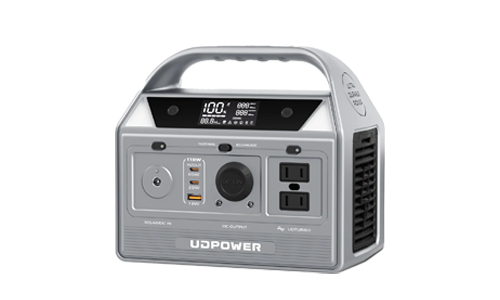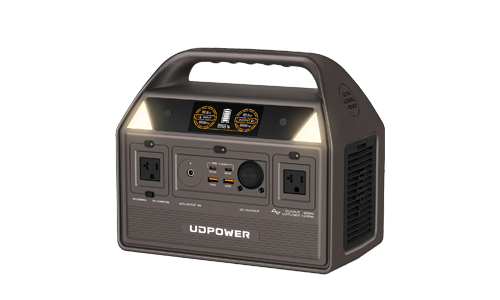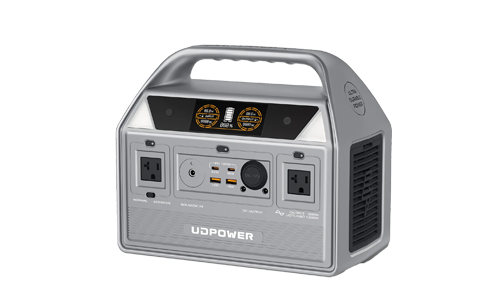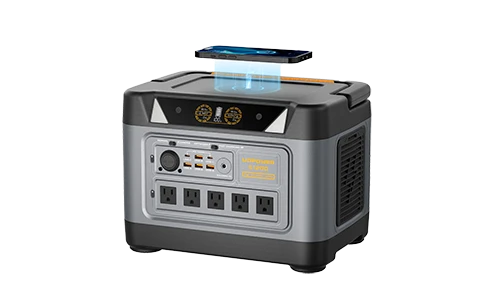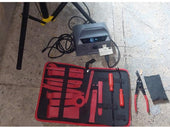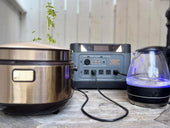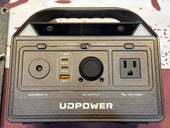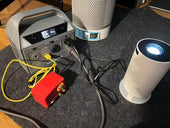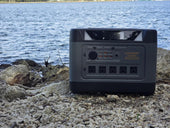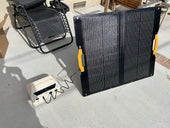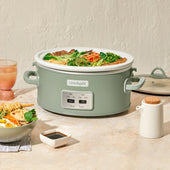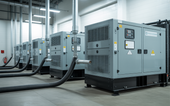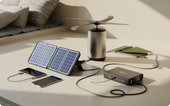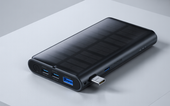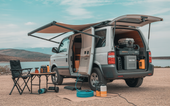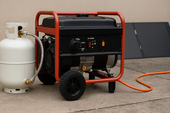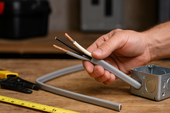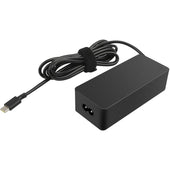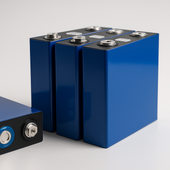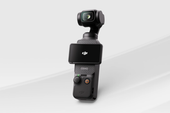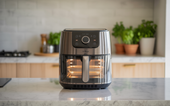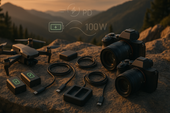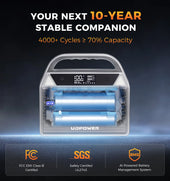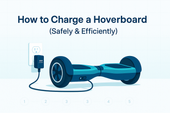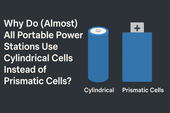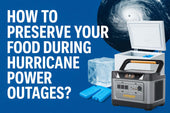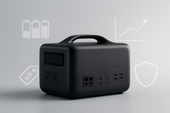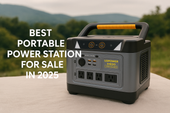Power Station Safety — Everything You Need to Know Before You Buy
ZacharyWilliamWritten by the UDPOWER Technical Team — With over 10 years of experience in lithium battery design, testing, and manufacturing, UDPOWER engineers specialize in creating portable power solutions for camping, emergency backup, and off-grid living. All UDPOWER products undergo rigorous safety testing, including UN38.3, CE, FCC, and UL certifications, before reaching customers.
Portable power stations have become essential for camping, RV life, emergency backup, and off-grid living. While capacity and portability often dominate buying decisions, safety should be the top priority. This guide explains the safety risks, protective features, and best practices you need to know before choosing a portable power station — based on real-world testing and industry standards.

1. Understanding Power Station Safety Risks
Even the best power stations can be unsafe if used improperly. Common safety risks include:
- Overheating & Thermal Runaway — Can cause battery swelling, fire, or explosion if temperatures rise uncontrollably.
- Short Circuit & Overcurrent — May damage internal components or connected devices.
- Overcharging & Deep Discharge — Reduces battery life and can cause overheating.
- Mechanical Damage — Dropping or puncturing the unit can cause internal cell damage.
- Environmental Exposure — Moisture, extreme heat, or freezing can impair safety performance.
In UDPOWER's lab tests, deliberate short-circuit simulations triggered automatic BMS shutdown within milliseconds, preventing thermal damage.
2. Battery Technology and Safety
The battery chemistry inside your power station plays a major role in safety:
- LiFePO₄ (Lithium Iron Phosphate) — Stable, long-lasting, lower fire risk, typically rated for 3000–5000 cycles. (Source: Battery University)
- NMC (Nickel Manganese Cobalt) — Higher energy density, but more sensitive to heat and fewer life cycles (500–1000).
Look for certifications like UN38.3 (transport safety), UL 1642 (battery safety), CE (EU compliance), and FCC (EMC compliance) to ensure compliance with global safety standards.
Here’s how the two main battery types used in portable power stations compare in safety:
| Feature | LiFePO₄ | NMC |
|---|---|---|
| Thermal Stability | High — resists overheating and thermal runaway | Moderate — more sensitive to high temperatures |
| Cycle Life | 3000–5000 cycles | 500–1000 cycles |
| Fire Risk | Low | Medium |
| Energy Density | Lower | Higher |
| Typical Use Case | Home backup, RV, long-term use | Portable devices where size/weight is critical |
3. Power Station Safety Checklist
Before you buy or use a portable power station, go through this checklist to ensure maximum safety:
| Check Item | Why It Matters | Safe Practice |
|---|---|---|
| Battery Type | Different chemistries have different safety levels. | Prefer LiFePO₄ for higher stability and longer lifespan. |
| Safety Certifications | Proves compliance with global safety standards. | Look for UN38.3, UL, CE, FCC marks. |
| Battery Management System (BMS) | Prevents overcharge, short circuit, and overheating. | Ensure multiple layers of protection and temperature monitoring. |
| Ventilation | Overheating can trigger thermal runaway. | Keep vents clear during charging/operation. |
| Charging Method | Wrong charger can cause voltage mismatch and damage. | Only use manufacturer-approved chargers. |
| Environmental Conditions | Extreme heat, cold, or moisture affects battery safety. | Store in a cool, dry place away from sunlight. |
4. Real-World Case: How a BMS Prevented a Fire
Case Study from UDPOWER’s Service Records: During a summer camping trip, a customer placed their power station under a tent tarp with poor ventilation while charging a mini fridge. The internal temperature rose above the safe threshold. The built-in Battery Management System (BMS) detected overheating and immediately shut down the output. The user reported a high-temperature warning, but no damage occurred — avoiding a potential fire hazard. This case highlights why built-in safety systems are critical, especially in hot environments.
Safety Tip: Even with the best technology, safe usage habits are equally important. Always allow proper airflow, follow rated capacity limits, and store your power station correctly when not in use.
5. Built-in Safety Features You Should Look For
High-quality portable power stations include multiple layers of safety protection:
- Advanced Battery Management System (BMS) for cell balancing and fault detection.
- Overcurrent, overvoltage, and short-circuit protection.
- Temperature monitoring with automatic shut-off.
- Surge protection for AC outputs.
- Fire-resistant housing materials.
All UDPOWER models integrate dual temperature sensors and independent MOSFET cutoff circuits to handle overloads without risking thermal damage.
6. Safe Usage Guidelines
Follow these tips to use your power station safely:
- Charge using the manufacturer-approved charger only.
- Operate and store in a well-ventilated area away from heat sources.
- Keep away from flammable objects during charging.
- Connect appliances only within the rated power limits.
- Do not block cooling vents during operation.
Tip: In our customer support cases, 80% of overheating issues came from blocked vents during heavy loads.
7. Maintenance & Inspection
Regular care ensures long-term safe performance:
- Inspect cables, ports, and housing for damage.
- Keep the unit clean and dust-free.
- Update firmware on smart models to improve safety algorithms.
- Retire or recycle old batteries through certified facilities.
8. Emergency Situations
If you notice overheating, smoke, or unusual smells:
- Immediately disconnect all devices.
- Move the unit to a safe, open area away from flammable objects.
- Do not attempt to open or repair the battery yourself.
- Contact the manufacturer or a certified technician.
9. Buying a Safe Power Station
Before you buy, check for:
- Verified safety certifications (UN38.3, UL, CE, FCC).
- Reputable brand with proven track record.
- Warranty and after-sales support.
UDPOWER offers a 5-year warranty and lifetime technical support, ensuring your investment remains safe for years.
Related Reading: The Ultimate Guide to Buying a Portable Power Station
10. Myths & Misconceptions
- “Bigger battery means more danger” — Not always, battery chemistry and design matter more.
- “All lithium batteries are the same” — Different chemistries have different safety profiles.
- “You can use it anywhere” — Environmental factors affect safety and performance.
11. Conclusion
Safety is not an optional feature — it’s a must-have. By understanding the risks, choosing safe battery technology, and following proper usage practices, you can enjoy reliable portable power without compromising your safety. Always prioritize certified brands, robust safety systems, and good after-sales support.
